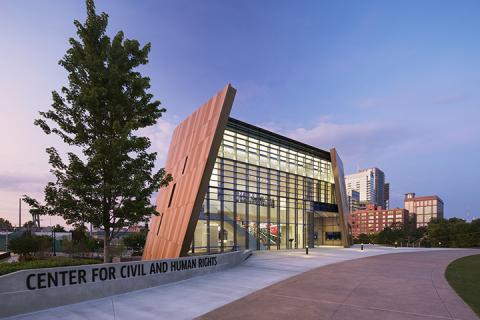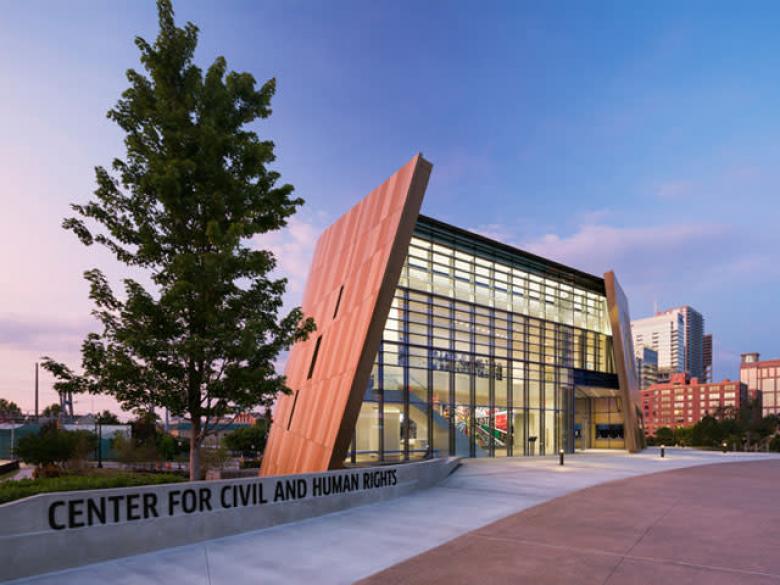Must-See Civil Rights Sites in Georgia
From Atlanta to Savannah and many points between, here are a few civil rights sites in Georgia too important to miss.
The Civil Rights Movement, headed by Georgia resident Martin Luther King Jr., led to sweeping social change unparalleled in U.S. history. As you plan your visit to Georgia, follow the dream for justice and equality around the state to witness how historic landmarks and cultural institutions preserve the memory of Georgia's civil rights past.
In Atlanta
National Center for Civil and Human Rights
The Atlanta Streetcar connects Atlanta's commercial corridor to the hub of its rich civil rights history. Ride it to Centennial Olympic Park and walk a few blocks north to the National Center for Civil and Human Rights. One of Atlanta’s newest cultural attractions, the center presents real-life stories from the civil rights and global human rights movements.
The Municipal Market
After exploring the center, take the streetcar to The Municipal Market, where you can walk the one-mile Sweet Auburn Historic District. Once a wealthy black community, the district's large churches and commercial buildings still reflect its history, heritage, and achievements.
Related: How to Spend a Day in Atlanta's Sweet Auburn Historic District
Martin Luther King, Jr. National Historical Park
Make your next stop the Martin Luther King Jr. National Historical Park, which shares the history of King's dream and his leadership in the Civil Rights Movement. Visitors may view a film on the movement, King's birth home, and Ebenezer Baptist Church, the sanctuary where the "Drum Major for Justice" preached his first sermon in 1947. Be sure to check out the Martin Luther King Jr. Center for Nonviolent Social Change, the largest repository in the world of primary source materials on King and the American Civil Rights Movement, includes Dr. and Mrs. King's crypt, which is surrounded by a reflection pool.
Morehouse College, Spelman College and Clark Atlanta University
Atlanta is also home to historically black colleges worth visiting. The all-male Morehouse College, King’s alma mater, played a major role in the Atlanta Student Movement and the Committee on the Appeal for Human Rights in 1960. Students at the prestigious all-female Spelman College were also involved in anti-segregation protests and sit-ins; many were arrested and jailed for their involvement. Prominent alumnae include writer Alice Walker and activist Marian Wright Edelman. Clark Atlanta University was also at the center of the Civil Rights Movement.
Around the state
Albany Civil Rights Institute
You'll find even more civil rights–related museums and memorials as you travel around the state. The Albany Civil Rights Institute is housed in the historical Mt. Zion Missionary Baptist Church, where local citizens like Charles Sherrod and Bernice Johnson Reagon stood against voting discrimination. An exhibit honors the Freedom Riders of 1961.
Savannah, Thomasville, Midway
In Savannah, the Ralph Mark Gilbert Civil Rights Museum chronicles the civil rights struggles of the state’s oldest black community. The collections at the Jack Hadley Black History Museum in Thomasville trace the history of black Americans and include artifacts of black achievement like the bust of Lt. Henry O. Flipper, the first black graduate from West Point. The Historic Dorchester Academy & Museum in Midway includes a permanent exhibit of its history as a training site for grassroots leaders, including Septima Clark, Ambassador Andrew Young and King.
“We Must Never, Ever Forget”
Legendary civil rights leader and Georgia congressman John Lewis on the importance of remembering the past:
Interview by Diondra Powers
"Georgia's civil rights sites remind us that we must never, ever forget the distance we've come and the progress we've made. To be able to walk through some of these places, it's like touching and feeling the spirit of history. For people who were not even born, for people who were not even a dream, some of what they see is unreal.
I know the first time I walked through the National Center for Civil and Human Rights, I was moved to tears. When you first walk in, on one side it says 'white,' on the other side is 'colored.' That's what I grew up in. But individuals like Rosa Parks, Martin Luther King Jr., and others came along; they gave us a way out, gave us a means to deal with it.
For some people, it's too painful to think about the past, to see signs and symbols of the past. But we cannot sweep it under the rug or in some dark corner. It's our history, and people need to know about it.
When people visit the Center or visit the Martin Luther King Jr. National Historical Park, or visit Albany or Savannah or other parts, and see these places, some people are renewed, some people are inspired, some people are moved to do something. It's important to tell our children, 'This is what another generation did. This is what another group of people changed, and you too can do something. You, too, can make a contribution.'"










